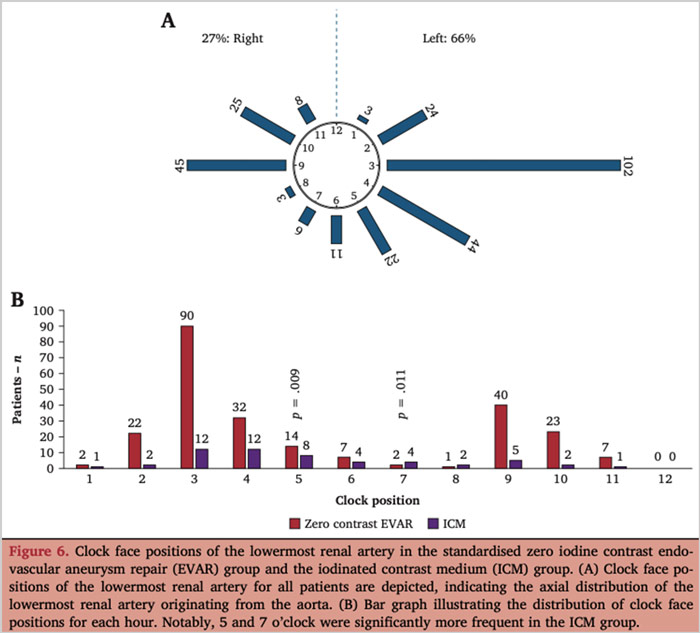Feasibility and safety of using carbon dioxide exclusively in regular endovascular aortic aneurysm repair : results of a multicentre, prospective, zero iodine contrast endovascular aneurysm repair study
Selected in ESVS Journal by Hortense Chalret du Rieu
This study evaluates the use of CO2 angiography for standardised EVAR without iodine contrast. Conducted across multiple centres, it enrolled 293 patients with asymptomatic abdominal aortic aneurysms (≥ 55 mm). The results show that the zero-iodine contrast protocol is both safe and feasible, applicable to 82 % of patients, and demonstrates high procedural success.
References:
Authors: Emiliano Chiscia, Emanuele Ferrerob, Michele Antonelloc, Luca Mezzettod, Raffaele Pullie, Giacomo Iserniaf, Mauro Gargiulog, Giovanni Pratesih,∙Luca Bertoglioi,∙Stefano Michelagnolia, the Zero Iodine Contrast EVAR Collaborative Study Group.
Reference: Eur J Vasc Endovasc Surg . 2024 Nov 16:S1078-5884(24)00967-5
DOI: 10.1016/j.ejvs.2024.11.011
Read the abstractObjective:
The objective was to evaluate the feasibility and safety of a standardised EVAR procedure using only CO2 angiography.
Study:
This prospective, multicentre, national study enrolled consecutive patients between January 2023 and January 2024.
Population:
293 patients enrolled with asymptomatic abdominal aortic aneurysms measuring ≥ 55 mm and for whom a standard endovascular graft (instructions for use) was anatomically feasible.
Endpoint:
Procedural technical success, clinical success at 30 days, 25 and zero iodine contrast EVAR procedure feasibility.
Outcomes and conclusion:

The standardised zero iodine contrast EVAR protocol reported here is both safe and feasible, and is applicable in 82 % of consecutive non-selected patients.
Get the latest clinical cases and breaking news delivered straight to your inbox!


Comments: